Directing the Story
Directing the Story
Professional Storytelling and
Storyboarding Techniques
for Live Action and Animation
Francis Glebas

Table of Contents
Focal Press is an imprint of Elsevier
30 Corporate Drive, Suite 400, Burlington, MA 01803, USA
Linacre House, Jordan Hill, Oxford OX2 8DP, UK
Copyright 2009, Francis Glebas. Published by Elsevier Inc. All rights reserved.
No part of this publication may be reproduced, stored in a retrieval system, or transmitted in any form or by any means, electronic, mechanical, photocopying, recording, or otherwise, without the prior written permission of the publisher.
Permissions may be sought directly from Elseviers Science & Technology Rights Department in Oxford, UK: phone: (+44) 1865 843830, fax: (+44) 1865 853333, E-mail: permissions@elsevier.com. You may also complete your request on-line via the Elsevier homepage ( http://elsevier.com ), by selecting Support & Contact then Copyright and Permission and then Obtaining Permissions.
 Recognizing the importance of preserving what has been written, Elsevier prints its books on acid-free paper whenever possible.
Recognizing the importance of preserving what has been written, Elsevier prints its books on acid-free paper whenever possible.
Library of Congress Cataloging-in-Publication Data
Glebas, Francis.
Directing the story: professional storytelling and storyboarding
techniques for live action and animation / by Francis Glebas.
p. cm.
Includes bibliographical references and index.
ISBN 978-0-240-81076-8 (pbk. : alk. paper) 1. Motion picturesProduction
and direction. 2. Storyboards. I. Title.
PN1995.9.P7G448 2008
791.43023dc22
2008026270
British Library Cataloguing-in-Publication Data
A catalogue record for this book is available from the British Library.
ISBN: 978-0-240-81076-8
For information on all Focal Press publications visit our website at www.elsevierdirect.com
09 10 11 12 13 5 4 3 2 1
Printed in China

Preface
Welcome all who wish to learn the secrets of making movies. This book is really the documentation of my trying to learn the real secrets of what makes movies great. When I began teaching, my students gave me feedback that they had never heard of a lot of the things I taught. This surprised me and I decided it was necessary to get the word out. Beware though that once you open these pages, watching movies will never be the same again.
The classical Hollywood style asks that form be rendered invisible; that the viewer see only the presence of actors in an unfolding story that seems to be existing on its own; that the audience be embraced by the story, identify with it and its participants. Unlike montage and the long take, the continuity style was neither theorized nor analyzed (not by people who developed and used it, at least); its rules were developed intuitively and pragmatically through the early years of filmmaking. The continuity style developed because it worked, and its working was measured by the fact that it allowed filmmakers to make stories that audiences responded to with ease and with desire. They liked what they saw and wanted more. We still want more.
In my review of the literature, the classical Hollywood style was never fully analyzed, until now. So what is unique about my teaching? I began by asking myself what it is that the audience is doing when they watch a film. I then proceeded to create strategies to address this when making a film. Heres what the viewers do:
1. First, they pay attention to the screen.
2. They perceive what is being shown and identify what things are.
3. Then they read the signs as characters are performing actions. They are following the story and starting to identify with the characters they like.
4. Then they start to make connections as to what it all means.
5. Then they guess what will happen next and where it is leading.
6. Then they worry about the characters and the outcome, continually adjusting their hypothesis according to new information provided.
7. Finally, when the film ends, they should feel the emotional closure of surprise and vindication that it ended the way they thought but not in the way they expected.
What is very interesting is number four. Once the audience starts to connect the pieces of what the story events mean, they start to feel emotions. This was an amazing discovery: Meaning automatically evokes emotions!
Francis Glebas
Phd. in Fantasy
Reference
1. Hill, J. and P. Gibson. Film Studies. New York: Oxford University Press, 2000.
Acknowledgments
I could not have created this book without the generous help of my many mentors and guides. I would like to thank Dr. Alwyn Scott, Dr. Felisha Kaplan, Dr. Marlene Kasman, Dr. Elena Bonn, Dr. Milton Erikson, Anthony Robbins, Gregory Bateson, Jacques Lacan, Slavoj Zizek, and George Lakoff for teaching me how to think. My fellow artists Ed Gombert, Bill Perkins, Dan Cooper, Fred Warter, Vance Gerry, Walt Stanchfield, Sterling Sheehy Jean Gillmore, Larry Scholl, and Dante Barbetta for teaching me to paint and draw. I would like to thank all my students who have taught me while I was engaged in teaching them. I wish to thank all those who gave me opportunities in the film business: Michelle Pappalardo Robinson, Donovan Cook, Norton Virgien, Mike Gabriel, Eric Goldberg, Kirk Wise, Gary Trousdale, Roger Allers, Rob Minkoff, Kathleen Gavin, Tom Schumacher, Sharon Morill, Roy Disney, Jeffrey Katzenberg, Charlie Fink, and Tom Ruzicka. I would especially like to thank Ron Clemens and John Musker for believing in me when I was just starting out. The following people gave me opportunities to teach and develop the material for this book: Jack Bossom, Tenny Chonin, Alex Topeti, Ed Oboza, Pam Hogarth, Kristin Bierschbach, Alegria Castro, Peggy Van Pelt, and Toni Pace.
In making this book a reality, I wish to thank my editor, Georgia Kennedy, and the crew at Focal Press, Chris Simpson, Lianne Hong, and Dennis Schaefer. Nancy Beiman read the material with a fine-tooth comb and helped me clarify concepts and take out the fluff. She would probably tell me to cut this part. Toni Vain helped give the book a vision in its very early stages. My film editor, Ivan Balanciano, worked with me as I experimented with learning different editing approaches. I would like to thank the students who helped clean up some the illustrations: Jessica Dru, Aernout Van Pallandt, Karen Yan, Rajbir Singh, and Joan LaPallo.
Finally, I especially wish to thank my friends and family for believing in me and teaching me how to live and love: Doug, Joan, Toni, Tatty, and my parents. A great thanks and love for my wife, Carolyn, and son, Ryan, for going on this journey with me.

The Goal: Why Do We Watch?
Why Do We Watch Movies?
This is the first question I ask my film students: Why do we watch movies? Most of them have never thought to ask this question. They think about it, raise their hands, and start suggesting answers.
There are many reasons why we all watch movies, and as my students comment, I write their answers on the chalkboard. There is the wish to share experiences with the characters and our friends. We watch to learn all kinds of things. We watch to see spectacles. We get to see other worlds that well never go to. We want to hear a good story. Someone suggests we watch to escape. Escape what? Boredom! comes the answer, and the students laugh. But why do they laugh? Maybe theres a clue there.
Next page
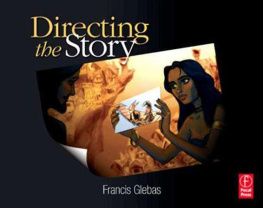
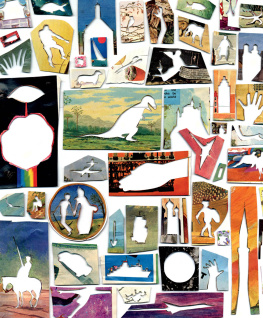
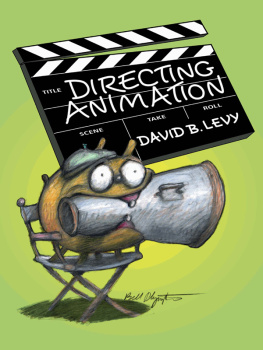
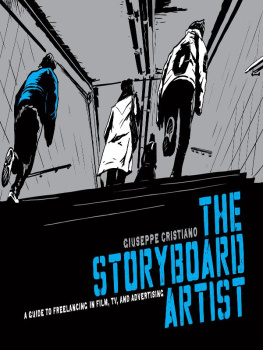
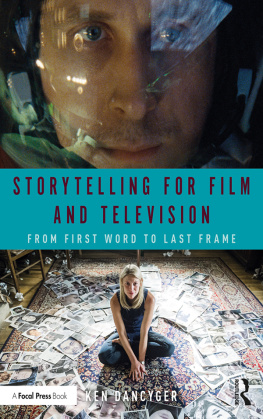

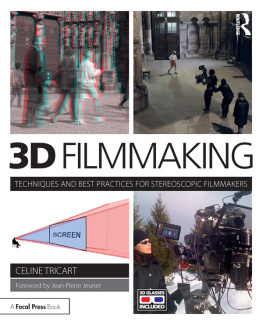
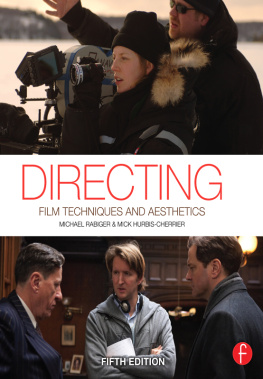

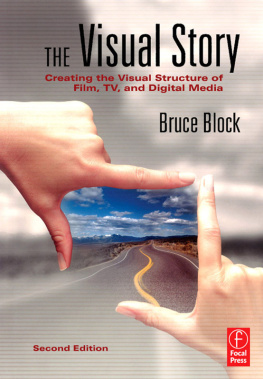

 Recognizing the importance of preserving what has been written, Elsevier prints its books on acid-free paper whenever possible.
Recognizing the importance of preserving what has been written, Elsevier prints its books on acid-free paper whenever possible.
